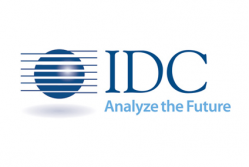The overall wearables market is expected to return to strong growth after a brief slowdown in 2016 that resulted from delayed launches of major platforms and notable vendors struggling to maintain pace.
Looking ahead, new vendors, emerging form factors, and an expanded number of retail outlets will drive worldwide wearable device shipments from 102.4 million in 2016 to 237.5 million in 2021, a five-year compound annual growth rate (CAGR) of 18.3%, according to new data from the International Data Corporation (IDC) Worldwide Quarterly Wearable Device Tracker.
“With the shift towards watches and clothing, the need of a fashionable design will take center stage,” said Jitesh Ubrani senior research analyst for IDC Mobile Device Trackers. “Tech companies will be forced to step up their game and offer a wider selection of sizes, materials, and designs in order to appeal to a broader audience. We also expect more tech vendors to partner with fashion brands for their creativity, and equally important, their distribution network. In doing so, wearables will be made available to a previously unaware auidence – one that frequents fashion outlets over tech outlets.”
Earworn devices are also poised for growth as new startups bring their innovative technology to the table and traditional headphone companies incorporate additional capabilities beyond audio. Though growth is expected, volumes will remain somewhat modest as the primary features of health and fitness tracking “hearables” overlap with the more popular wrist worn devices.
In addition to the growth opportunity for these products, it is important to note the diversity of options within each category. “Watches struggled as mass market devices due to limited and unclear value proposition to a broad base of potential users,” noted Ramon T. Llamas, research manager for IDC’s Wearables team. “Most potential customers saw watches performing multiple functions, but none of them worked exceptionally well to accomplish a myriad of tasks. Going forward, we instead expect watches to hyper-segment into specific niches, including connected kids’ watches, athletic watches, luxury and fashion watches, and lifestyle watches that better address different segment needs, whether they be communication, health and fitness, or as smart luxury and fashion timepieces. Not all of them will have the same features, but they will have enough – and the rights ones – to do the job.”
The same approach can be applied to emerging products. Llamas added, “Clothing, for example, can be designed to track athletic performance or to track vital information and communicate with workers – like first responders heading into dangerous situations. Similarly, companies are augmenting earwear with fitness tracking and smart coaching, while others are focusing on enhancing audio or providing real-time language translation. In both cases, the wearable is not taking a one-size fits all approach, and instead concentrates on specific solutions for specific use cases.”
|
Worldwide Wearable Device Market, Shipments by Product, Market Share, and CAGR (Shipments in Millions) |
|||||
|
Product |
2016 Shipments |
2016 Market Share |
2021 Shipments* |
2021 Market Share* |
CAGR (2016 – 2021)* |
|
Watch |
49.2 |
48.1% |
152.0 |
64.0% |
25.3% |
|
Wrist Band |
48.7 |
47.6% |
57.5 |
24.2% |
3.4% |
|
Clothing |
1.3 |
1.2% |
22.3 |
9.4% |
76.6% |
|
Earwear |
0.7 |
0.7% |
4.2 |
1.8% |
43.1% |
|
Others |
2.4 |
2.4% |
1.5 |
0.6% |
-9.0% |
|
Total |
102.4 |
100.0% |
237.5 |
100.0% |
18.3% |
|
Source: IDC Worldwide Quarterly Wearable Device Tracker, March 20, 2017 |
|||||

